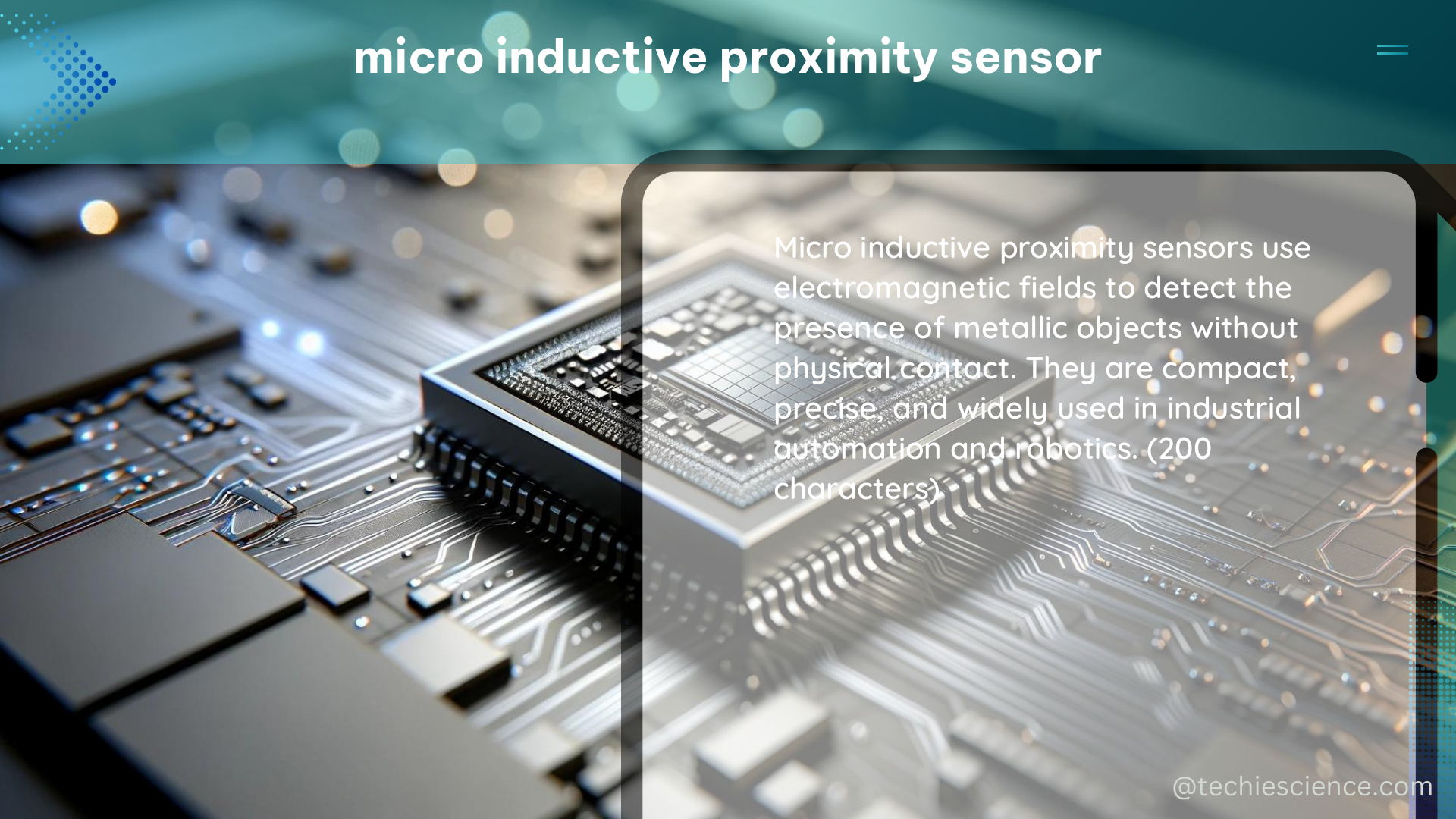Micro inductive proximity sensors are advanced electronic devices that can detect the presence of ferrous targets without any physical contact, making them ideal for non-contact position detection in various industrial applications. These sensors operate based on the principle of inductive coupling, where a coil within the sensor generates an electromagnetic field that interacts with a ferrous target, allowing the sensor to detect changes in the electromagnetic field and determine the proximity of the target.
Understanding the Technical Specifications of Micro Inductive Proximity Sensors
The technical specifications of micro inductive proximity sensors are crucial in determining their performance and suitability for specific applications. Let’s dive into the key technical specifications:
Operating Voltage and Supply Voltage Limits
The operating voltage or supply voltage limits specify the range of voltage values within which the sensor can operate effectively. Typical operating voltages for micro inductive proximity sensors range from 10 VDC to 30 VDC, with some models capable of operating at higher voltages up to 60 VDC. Ensuring that the sensor’s operating voltage matches the power supply in your application is essential for proper functionality.
Switching Function and Discrete Output Function
Micro inductive proximity sensors can have either a normally open (NO) or normally closed (NC) switching function, which determines the sensor’s output state when a target is detected. The discrete output function indicates whether the sensor has a digital (on/off) or analog output, which can affect how the sensor is integrated into a larger system.
Voltage Drop and Maximum Voltage Drop
The voltage drop or maximum voltage drop specification indicates the amount of voltage loss that can occur when the sensor is activated. This parameter is crucial in determining the sensor’s overall performance, as a high voltage drop can impact the sensor’s ability to reliably detect targets.
Switching Frequency
The switching frequency specification determines the sensor’s ability to measure speed or frequency, which can be important in applications where dynamic target detection is required. Micro inductive proximity sensors can have switching frequencies ranging from a few Hz up to several kHz, depending on the model and application.
Rated Operating Distance and Nominal Sensing Distance
The rated operating distance or nominal sensing distance specification indicates the maximum distance at which the sensor can reliably detect a target. This parameter is a critical factor in position detection applications, as it determines the sensor’s effective range and the required proximity between the sensor and the target.
Measurement Sensitivity
In addition to the technical specifications mentioned above, micro inductive proximity sensors can also be characterized by their measurement sensitivity, which is a quantitative measure of the sensor’s ability to detect changes in the electromagnetic field generated by a target. Measurement sensitivity is typically expressed in terms of the least significant bit (LSB) or other units, and it can vary depending on the sensor’s design and operating conditions.
Customizing Micro Inductive Proximity Sensors for DIY Projects

While micro inductive proximity sensors are primarily used in industrial applications, they can also be adapted for DIY projects and other creative applications. By understanding the sensor’s technical specifications and measurement sensitivity, DIY enthusiasts can customize the sensor’s settings to suit their specific needs and create more precise and responsive systems.
For example, a DIY enthusiast could use a micro inductive proximity sensor to build an automated system that turns on a light or activates a fan when an object is detected within a certain distance. By adjusting the sensor’s operating voltage, switching function, and rated operating distance, the DIY enthusiast can fine-tune the system to achieve the desired level of performance and responsiveness.
Conclusion
Micro inductive proximity sensors are powerful and versatile electronic devices that play a crucial role in various industrial applications. Understanding the technical specifications and measurement sensitivity of these sensors is essential for selecting the right sensor for a particular application and ensuring optimal performance.
Whether you’re working on an industrial project or a DIY endeavor, mastering the intricacies of micro inductive proximity sensors can open up a world of possibilities. By leveraging the sensor’s capabilities and customizing its settings, you can create innovative solutions that meet your specific needs and push the boundaries of what’s possible.
References:
- Guo, Y.-X., Lai, C., Shao, Z.-B., & Xu, K.-L. (2019). Differential Structure of Inductive Proximity Sensor. Sensors, 19(10), 2365.
- Real Pars. (2020). 3-wire Inductive Proximity Sensor | How to Read the Datasheet. Retrieved from https://www.realpars.com/blog/proximity-sensor-datasheet
- Li, Y., Li, X., & Li, J. (2015). An Analog-Digital Mixed Measurement Method of Inductive Proximity Sensor. Sensors, 15(12), 32405-32421.
- Verified Market Reports. (2023). IoT Smart Inductive Proximity Sensors Market Size & Growth. Retrieved from https://www.verifiedmarketreports.com/product/iot-smart-inductive-proximity-sensors-market/
- ResearchGate. (n.d.). A low-cost inductive proximity sensor for industrial applications. Retrieved from https://www.researchgate.net/publication/223872727_A_low-cost_inductive_proximity_sensor_for_industrial_applications

The lambdageeks.com Core SME Team is a group of experienced subject matter experts from diverse scientific and technical fields including Physics, Chemistry, Technology,Electronics & Electrical Engineering, Automotive, Mechanical Engineering. Our team collaborates to create high-quality, well-researched articles on a wide range of science and technology topics for the lambdageeks.com website.
All Our Senior SME are having more than 7 Years of experience in the respective fields . They are either Working Industry Professionals or assocaited With different Universities. Refer Our Authors Page to get to know About our Core SMEs.